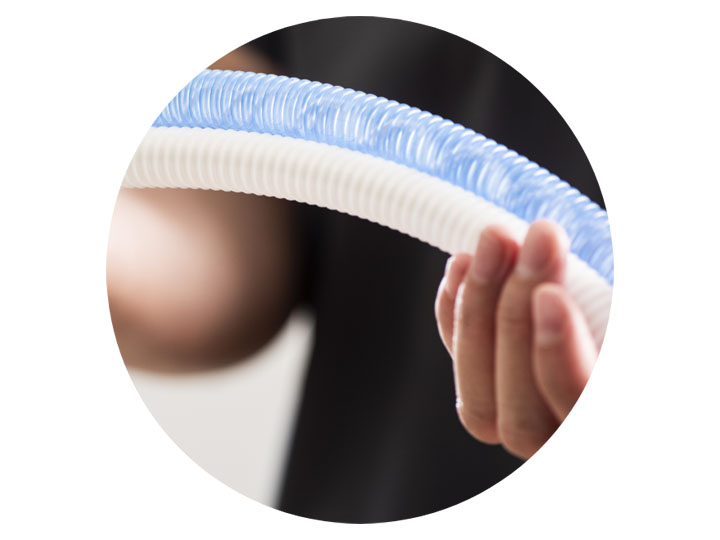
Invasive ventilation breathing circuits
Evaqua™ 2 technology within Fisher & Paykel Healthcare’s breathing circuits helps minimize mobile condensate in the expiratory limb by allowing water vapor to diffuse through the tubing wall.
View circuits
What is invasive ventilation?
Invasive ventilation is delivered directly to a patient’s lower airway via an endotracheal or tracheostomy tube.
This mode of delivery:
• bypasses the natural mechanisms of filtration, humidification and warming, typically provided by the upper airways
• inhibits the primary mechanisms of mechanical clearance such as coughing, sneezing, gagging and particle filtration.
The use of a ventilator is required in invasive respiratory support to enable or support lung function and subsequent gas exchange. In a healthy airway, gas is heated and humidified by the upper airway during inspiration and is fully saturated with water vapor at core body temperature (typically 37 °C, 44 mg/L H2O) when it reaches the distal airways.1
As the mechanisms of a healthy airway are bypassed, delivering heated and humidified gas is mandated and widely practiced during invasive respiratory support of infants.1,2
Delivering gases as close as possible to Optimal Humidity (37 °C, 44 mg/L H2O) supports continued mucociliary transport, as well as encourages open, patent airways for effective gas exchange and ventilation.3
F&P and Evaqua 2 are trademarks of Fisher & Paykel Healthcare Limited. For patent information, see www.fphcare.com/ip